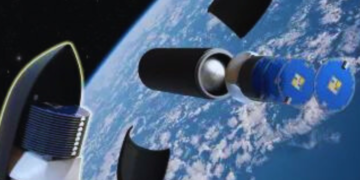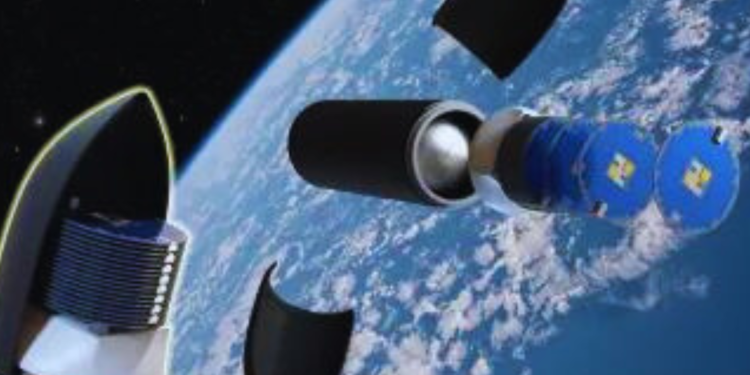The fight against climate change is about to receive a boost from a pair of unlikely heroes – miniature satellites called cubesats. NASA’s ambitious PREFIRE mission (Polar Radiant Energy in the Far Infrared Experiment) is gearing up for a dual launch, with two tiny cubesats set to embark on separate missions within a three-week window in May 2024.

Taking the Chill Out of Climate Modeling
These pint-sized powerhouses, each no bigger than a loaf of bread, pack a scientific punch. Equipped with sophisticated thermal infrared spectrometers, they will gather crucial data on far-infrared heat emissions, specifically focusing on the Earth’s polar regions.
This information is critical for improving the accuracy of climate models, a vital tool in our fight against global warming. Climate models are complex computer simulations that attempt to replicate the Earth’s climate system. By incorporating data on factors like atmospheric circulation, ocean currents, and heat fluxes, these models can predict future climate trends. However, the accuracy of these models hinges on the quality of the data they are fed. The far-infrared heat emissions leaving Earth’s poles represent a significant but poorly understood piece of this puzzle.
Understanding the Heat Loss Enigma
“The Arctic is warming at an alarming rate, with far-reaching consequences,” explains Tristan L’Ecuyer, the University of Wisconsin-Madison’s principal investigator for PREFIRE. These consequences impact not just the polar regions, but the entire planet, influencing factors like sea level rise and global weather patterns. PREFIRE will be the first mission to make detailed measurements of the radiant heat escaping from the poles. This data will shed light on how various factors, such as cloud formations, atmospheric humidity, and changes in land cover (ice transforming to water), affect this heat loss. Scientists believe these factors play a crucial role in regulating Earth’s energy balance. By precisely measuring far-infrared emissions, PREFIRE will provide a clearer picture of how these changes impact the heat radiating back into space, improving our understanding of the complex interplay between the poles and global climate.
Strength in Numbers: The Advantage of Twins
While a single cubesat could collect valuable data, having two offers significant advantages. Launching the cubesats into separate sun-synchronous orbital planes allows for a more comprehensive analysis. One satellite will map the initial state of heat emissions, while the second, orbiting six hours behind, will capture the dynamic changes occurring within the polar regions. This allows scientists to track how events like melting ice sheets, cloud formation, and moisture fluctuations influence heat loss over time. Essentially, the two cubesats act in concert, providing a more complete picture of the ever-changing heat signature of the poles.
Dedicated Launches for Precise Placement
The unique nature of the mission necessitates dedicated launches for each cubesat. Rocket Lab’s Electron rockets will propel these tiny titans into their precise orbital positions, ensuring they can collect the most valuable data. Unlike traditional rideshare launches where multiple payloads are deployed into a single orbit, PREFIRE’s cubesats require specific sun-synchronous orbits to fulfill their mission objectives. This dedicated approach underscores the critical nature of the PREFIRE mission and the importance of obtaining the most precise data possible from these miniature marvels.
Cubesats: A Cost-Effective Powerhouse
PREFIRE is a prime example of NASA’s cost-effective Earth Venture program. Selected in 2018 with a budget of nearly $33 million, it demonstrates the power of utilizing cubesats for targeted scientific research. These miniature marvels offer a cost-effective alternative to traditional spacecraft, allowing for more focused research endeavors at a lower price point. Cubesats are revolutionizing the field of Earth science, enabling researchers to gather crucial data at a fraction of the cost of traditional missions. This democratization of space exploration is opening doors for new scientific discoveries and allowing us to tackle complex challenges like climate change with innovative solutions.
A Brighter Future Through Tiny Eyes
The launch of these twin cubesats marks a significant step forward in our fight against climate change. By gathering crucial data on the far-infrared heat signature of the Earth’s poles, PREFIRE will empower scientists to refine climate models, leading to more accurate predictions and better-informed solutions. These tiny titans, though small in stature, hold the potential to make a giant leap in our understanding of our planet’s climate and pave the way for a more sustainable future. The success of PREFIRE paves the way for future cubesat missions focused on climate change and other critical scientific endeavors. As miniaturization and technological advancements continue, these tiny spacecraft promise to play an increasingly important role in our quest to understand and protect our planet.



















